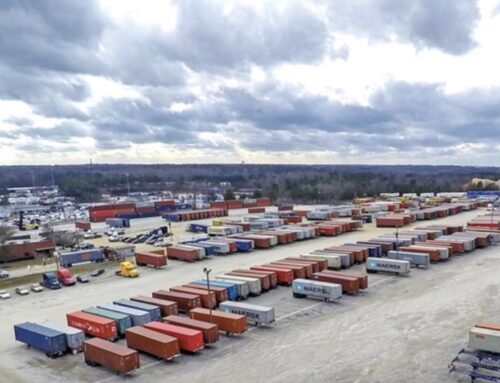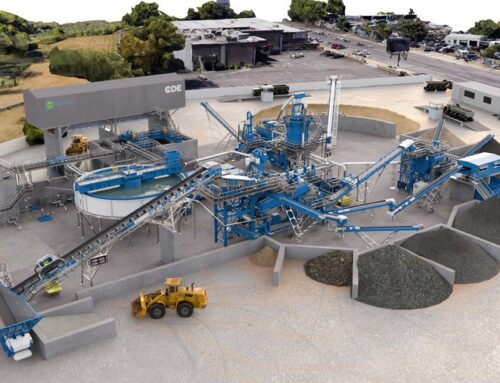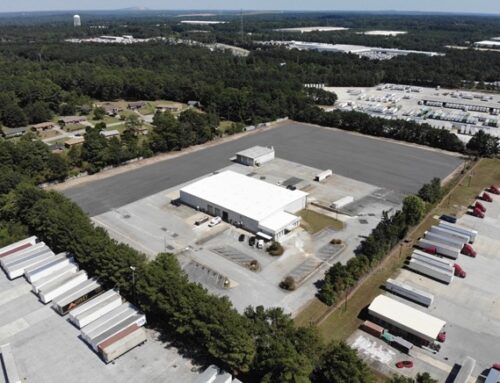By Inga Saffron, Inquirer Architecture Critic
Marvin Ginsberg made his living selling men’s clothing in crayon colors at bargain prices, but he also accomplished something that frequently eluded renowned architectural theorists: He succeeded in turning his building at Third and Market Streets into an exuberant sign that was impossible to miss.
Whatever your feelings about the three-story, red- white-and-blue graphic that envelops and brands the Shirt Corner, you can’t deny the building/sign became a Philadelphia landmark, accidentally, to be sure, but one that perfectly captured a joyous, unbridled form of retail hucksterism that is now fading from American cities. Even after the Shirt Corner store closed in 2009, the Shirt Corner sign lived on.
Soon that peeling relic will be history, too. A local developer, Leo Addimando of the Alterra Property Group, has just begun work on a project that will merge the Shirt Corner buildings and several adjoining properties into a mixed-use apartment house.
It is, in most respects, an exemplary development that will repair and preserve a row of important, early 19th-century commercial structures while helping to steer the Old City neighborhood more firmly on a residential course. But because this historically sensitive reconstruction will make a building less distinctive, it’s hard not to feel a twinge of regret at the passing of this bit of 20th-century Philadelphia. The ground floor of the idiosyncratic Shirt Corner spot will be occupied by the most generic of retailers, a CVS drugstore.
The trade-off is that the new apartments will strengthen the neighborhood. Old City has been transitioning from rowdy nightlife mecca to something more upscale, a design district populated by fashionable people. Addimando’s project will add 59 rental units and two shops to that mix, at the important Third Street gateway.
The historic reconstruction, being overseen by Sergio Coscia of Coscia Moos Architecture, is also an improvement over a 2009 proposal by another developer. That project called for leveling the Market Street buildings, which served the once-bustling port on the Delaware waterfront, and creating a faux version of the originals.
Addimando is going to great lengths to preserve the brick facades of the 200-year-old warehouse buildings. Only the one-story building that housed Lucy’s Hat Shop will be demolished. He plans to re-create the missing upper floors of the Shirt Corner, which were lost to fire, as well as a building that stood on the empty lot in the middle of the block.
The result should be a handsome, cohesive building. It won’t be as pure as the Colonial restorations at nearby Independence National Historic Park, but it may be more honest: All the new portions will be clad in a red brick different from the 19th-century facades, to acknowledge that this is 21st-century construction.
The price of this painstaking preservation is the CVS. The high rent it will pay is what underwrites the expensive renovation, which Addimando said should cost about $20 million.
Given the alternative – allowing the buildings to sit vacant – it’s hard to object. Still, it’s unfortunate the CVS frontage will occupy nearly half of Market Street’s 200 block, and that its windows will be papered over. Yes, Addimando persuaded the company to limit the camouflage to six feet of the 10-foot windows, but those are the six feet that count. That’s where pedestrians interact with the building.
Nevertheless, Joe Schiavo, a former board member of the Old City Civic Association, which was forced to dissolve last year after it was hit with a series of costly lawsuits from developers, said, “Overall, I feel positive about the project.” He was able to persuade Addimando to break up the monotony of the CVS facade with a glass case featuring rotating art displays.
The CVS is evidence of Old City’s evolution. Ginsberg’s cut-rate clothing store dates to a time when businesses were abandoning the area. His siblings bought up properties on Market Street during the early ’60s, turning them into complementary stores. The Third Street intersection sported a Tie Corner, a Pants Corner, and a Suit Corner. It was the original one-stop shopping: In a single trip, you could pick up a suit in red or banana, with matching shoes and ties.
In the early ’80s, Ginsberg hired architect David Nelson Beck to create the immense graphic sign. He needed it to attract business, Ginsberg often said. His siblings soon followed with their own versions. The celebrated planner Edmund Bacon complained the buildings had been “tarred and feathered,” but their facades became their best advertisement. Only the Suit Corner, on the southwest corner, survives. For now.
CVS isn’t the only chain replacing these quirky Market Street shops. A 7-Eleven opened just west of the Shirt Corner, and a Primo Hoagie is opening across the street. But unlike many commercial areas, Old City still has a healthy balance of independent retailers, mostly on the more affordably priced number streets. Janet Kalter, an Old City activist, counted 42 stores that opened or expanded in 2013.
Like other neighborhoods close to downtown, Old City is experiencing a residential boom. At least two high-rises are planned on Race Street, and luxury townhouses are going up at Second and Walnut. Even the long-blighted Samuel Machinery Building and Trenton China Pottery are finally being renovated for apartments.
The trick will be to strike a balance between the neighborhood’s past and its future, the quirky and the generic. As the Ginsbergs understood, a little flash isn’t always such a bad thing.
ingasaffron@gmail.com
215-854-2213 @ingasaffron
www.inquirer.com/built





